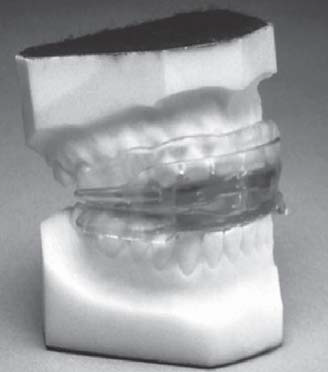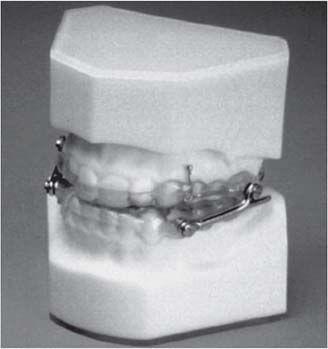Snoring is one of the sleep disorder breathing (SDB) characterized by repetitive upper airway obstruction and consequent oxyhaemoglobin desaturation during deep stages of sleep. Snoring occurs when you can’t move air freely through your nose and throat during sleep. This will make the surrounding tissues vibrate, hence produces the familiar snoring sound. People who snore often have too much throat and nasal tissue or ‘floppy’ tissue that is more prone to vibrate. The position of the tongue can also get in the way of smooth breathing.
The common causes of snoring are;
- Overweight – Fatty tissue and poor muscle tone contribute to snoring. Carrying excess weight just around your neck or throat can cause snoring.
- Age- as people’s aged, their throat becomes narrower, and the muscle tone in the throat decreases.
- The way you’re built- Men have narrower air passages than women and are more likely to snore. A narrow throat, a cleft palate, enlarged adenoids, and other physical attributes that contribute to snoring are often hereditary.
- Nasal and sinus problems- Blocked airways or a stuffy nose make inhalation difficult and create a vacuum in the throat, leading to snoring.
- Alcohol, smoking, and medications- Alcohol intake, smoking, and certain medications, such as tranquilizers like lorazepam (Ativan) and diazepam (Valium), can increase muscle relaxation leading to more snoring.
- Sleep posture. Sleeping flat on your back causes the flesh of your throat to relax and block the airway. Changing your sleep position can help.
It’s important to note the different ways you sleep and snore.
- Closed-mouth snoring may indicate a problem with your tongue.
- Open-mouth snoring may be related to the tissues in your throat.
- Snoring when sleeping on your back is probably mild snoring – improved sleep habits and lifestyle changes may be effective cures.
- Snoring in all sleep positions can mean your snoring is more severe and may require a more comprehensive treatment.
If snoring occurs frequently, it can affect the quantity and quality of your sleep and that of your family members and roommates. Snoring can lead to poor sleep and daytime fatigue, irritability, and increased health problems. Snoring may indicate sleep apnoea, a potentially life-threatening condition that requires medical attention. Sleep apnoea is a breathing obstruction, causing the sleeper to keep waking up to begin breathing again. Normal snoring doesn’t interfere with the quality of your sleep as much as sleep apnoea, so if you’re suffering from extreme fatigue and sleepiness during the day, your problem may be more than just snoring. Sleep apnoea creates several problems, including:
- Long interruptions of breathing (more than 10 seconds) during sleep caused by partial or total obstruction or blockage of the airway.
- Frequent waking from sleep, even though you may not realize it.
- Light sleeping- People with obstructive sleep apnoea sleep lightly to try to keep their throat muscles tense enough to maintain airflow.
- Strain on the heart. Prolonged suffering from obstructive sleep apnoea often results in higher blood pressure and may cause enlargement of the heart, with higher risks of heart attack and stroke.
- Poor night’s sleep. This leads to drowsiness during the day and can interfere with your quality of life.
- Low oxygen levels in the blood. This can lead to constricted blood vessels in the lungs and eventually pulmonary hypertension.
- Chronic headaches.
- Obesity.
- Daytime sleepiness and fatigue.
The recognition and treatment of snoring and obstructive sleep apnoea are two medical areas where dentistry can play a valuable role. Due to relative lack of public and professional attention given to sleep apnoea, it is important that when the patients indicated be asked about snoring, daytime sleepiness and other signs and symptoms of OSA. Oral appliances therapy has been accepted as an appropriate treatment modality for some patients by American sleep Disorders Association.
Oral appliances find their greatest success when utilized for simple snoring patients, upper airway resistance syndrome and mild to moderate OSA. It is showed that as groups of appliances were effective in mild and moderate OSA with 75% compliance rate (Lowe, 1994). Oral appliances can lift soft palate or advance tongue or mandible thus opening the airway. A combination of oral appliances and continuous positive airway pressure (CPAP) is also used in a few cases.
The oral appliances are as follows;
- Soft palate lift appliances- lift the soft palate are rarely used because of gag and discomfort
- Tongue retaining devices- have an anterior hollow bulb, which create a negative pressure vacuum when tongue inserted. Tongue held the forward away from post pharyngeal wall, opening the airway.
- Mandibular repositioning or advancement Devices (MRD/MAD)- engaged one or both dental arches to modify mandibular protrusion, these indirectly bring tongue forward and open up the posterior airway (please refer Figure 1 and figure 2).

Figure 1 : Mandibular Repositioning appliance non adjustable

Figure 2: Mandibular Repositioning Appliance
The advantages of oral appliances over sleep apnoea treatment options include relatively low cost, good success rates, good compliances, rapid effect and easy termination with sequalae (Padma A, 2007). Side effects with oral appliances are generally minor and include excessive salivation, muscle and tooth discomfort and occasionally temporomandibular joint discomfort. But symptoms usually improve over time.
Considering that snoring can lead to obstructive sleep apnoea and greatly increases patient’s chances of heart attack, stroke and early death, dentist might be in critical position to screen patients and treats the patient. However, it is necessary that a dentist works as a part of the treatment team which includes physician and sleep specialist and not assume responsibility for diagnosis and treatment by himself.
References
- Lowe, A. (1994). Dental appliances for treatment of snoring and sleep apnoea. In R. T. Kruyger M, Principles and practice of sleep medicine (pp. 722-735). Philidelphia: Saunders Co.
- Maglioca KR, H. J. (2000). Obstructive sleep apnoea Diagnosis, medical management and dental implications. J Am Dent. Assoc. Vol 136, 1121-1129.
- Padma A, R. N. (2007). Management of obstructive sleep apnea: A dental perspective. J Dent Res, 201-209.
- Waller PC, B. R. (1989). Is snoring a cause of vascular disease. An epidemiological review. Lancet, 143-146.
| Last Reviewed | : | 23 August 2019 |
| Writer | : | Dr. Zaihan bt. Othman |
| Accreditor | : | Dr. Nama Bibi Saerah bt. Abd. Karim |
| Reviewer | : | Dr. Sharol Lail bin Sujak |







